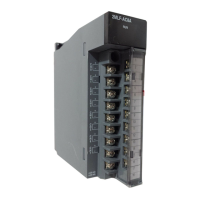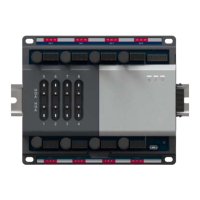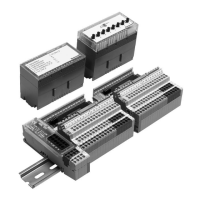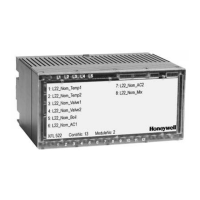Installation and Operations Guide
|
ACM-VLX/VLX/EXP/AXM
32
© Honeywell. All Rights Reserved. LT-VLXEXPAXMIOG Rev. 01
Twisted-pair Ethernet networks use four conductors (two twisted-pair wires) to
carry the network signal. The first pair carries the transmit signal positive and
negative. The second pair carries the receive signal positive and negative.
The VLX/ACM-VLX has an onboard Ethernet network interface card (NIC) that
supports 10Base-T (10 Mbps) and 100Base-TX (100 Mbps) Ethernet
connections to the BACnet internetwork. VLX/ACM-VLX will automatically
switch to 100 Mbps operation if other devices and cabling support it. ACM also
supports Gigabit Ethernet.
See the System Design Guide (LTBT-TM-SYSDSGN) for Ethernet and IP
architecture details.
MS/TP
MS/TP is a LAN standard designed specifically for BACnet applications. It uses
the EIA–485 signaling standard on twisted-pair cabling in a simple bus
configuration.
Use MS/TP to connect up to 10 BACnet MS/TP devices to the VLX. See Figure
6 on page 11 for more information. Do not connect the VLX to the BACnet
internetwork using MS/TP unless data traffic requirements are relatively low and
Ethernet connection is cost-prohibitive or otherwise difficult to provide. Ethernet
is the preferred primary connection method.
Ethernet RJ-45 jack An RJ-45 jack for connection to Ethernet is on the
upper left of the VLX/ACM-VLX. Pin
designations for the RJ-45 jack (perspective is
looking into the jack) are shown.
Cable type and length Use an approved Category 5 or better Ethernet
drop cable with RJ-45 plugs to connect the VLX/
ACM-VLX to an Ethernet switch. Use
professionally manufactured cables and a hub or
switch that supports 100 Mbps or Gigabit Ethernet
for best results.
The VLX/ACM-VLX does not implement internal
crossover. Use a straight-through or crossover
cable as appropriate for the device that the VLX/
ACM-VLX connects to. For example, if the VLX/
ACM-VLX connects directly to an operator
workstation without a hub, a crossover cable most
likely will be required. See the BACtalk System
Design Guide (LTBT-TM-SYSDSGN) for details
about crossover cabling.
Pin As s ig nme nt
1 Trans mit +
2 Trans mit –
3 Re ce ive +
6 Re ce ive –

